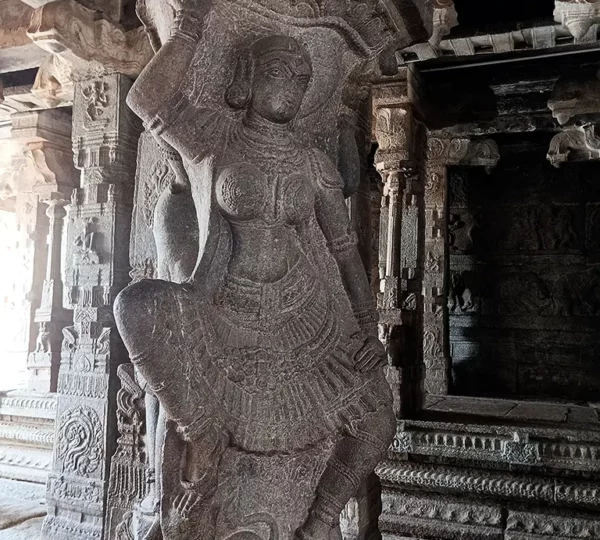Natya Mandapa Photogallery
The Natya Mandapa, located in front of the Garbha Griha (main shrine), is a visual masterpiece. It boasts exquisite sculptures of dancers that capture the grace and beauty of Indian classical dance forms. Among these dancers, you’ll also find the representation of the Vasthu Purusha, the ideal man, adding a layer of symbolism and significance to the temple’s art.
As you gaze upward in the Natya Mandapa, you’ll be captivated by the breathtaking ceiling paintings. These artistic treasures depict various Gods and Goddesses in all their divine glory. One painting, in particular, stands out: the intricate portrayal of Lord Krishna. This masterpiece is so finely detailed that it appears as if Lord Krishna’s eyes follow you wherever you stand. Each mural is framed with a unique border, and in total, there are around 450 distinctive designs adorning the temple’s ceiling.
What makes these paintings even more remarkable is their age. These frescoes are approximately 480 years old, yet their colors and details have retained their vibrancy without the need for repainting. The artists of that time used natural materials, such as extracts from leaves and fruits, for their paints. Remarkably, beneath these ancient frescoes, you can still observe shallow holes where the dyes were crushed and prepared.



The Jewel of the Ranga Mantapa
A Closer Look at the Pillars
The Natya Mandapa’s pillars are a work of art in themselves. The central group of twelve pillars features almost life-size representations of musicians and dancers, each carved with an exceptional degree of spirit and freedom. Notable figures include Bhiksatanamurti, Brahma playing the drum, Tumbura strumming the strings of the vina, Nandikesvara playing the hudduka, the celestial danseuse Ramba, Bhringi, Chandra, and a prominent Nataraja figure.
Intricate Pillar Variations
Beyond the central group of pillars, the Natya Mandapa features several other pillar variations, such as pillars with one, two, or three pillarets projecting, and pillars with Vyala brackets and riders. Each of these pillars is adorned with Vijayanagara-style corbels, adding a touch of architectural diversity to the temple.
Mural Paintings: A Timeless Narrative
Perhaps the most remarkable feature of the Natya Mandapa is the plethora of mural paintings adorning the ceiling. These murals depict scenes from the Mahabharata, Ramayana, and various puranas. These ancient narratives come to life in vibrant colors and intricate details. Each panel tells a story, making the ceiling a visual narrative of epic proportions.
Among the murals, you’ll also find figures of women in charming postures, adding a touch of grace and beauty to the temple’s visual tapestry.



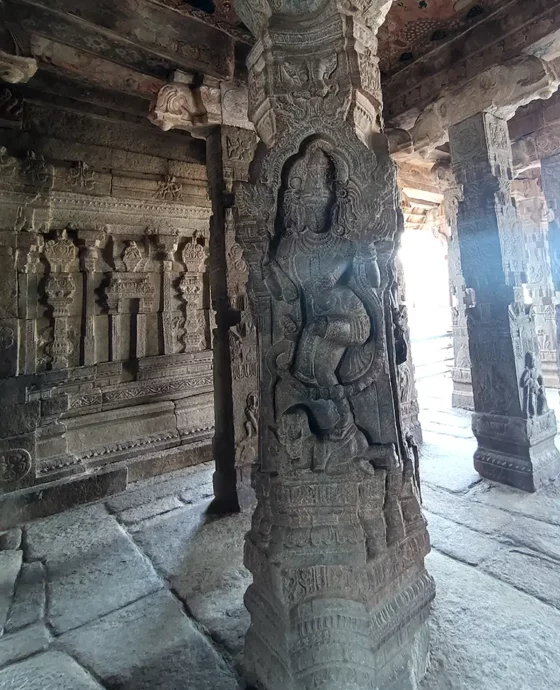

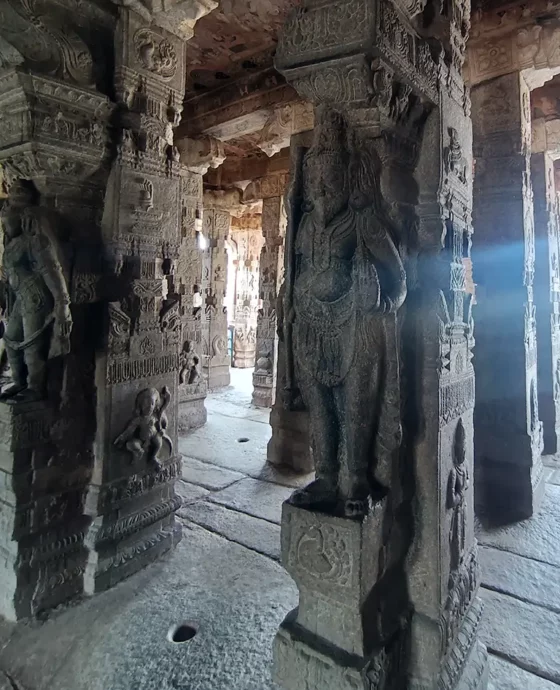
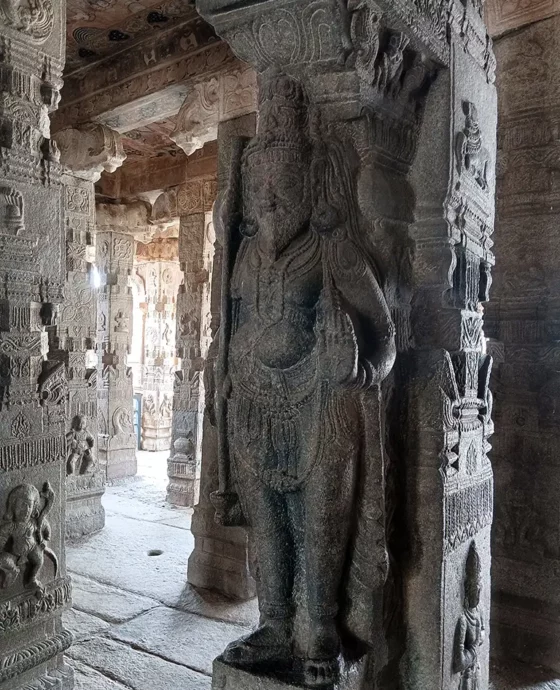

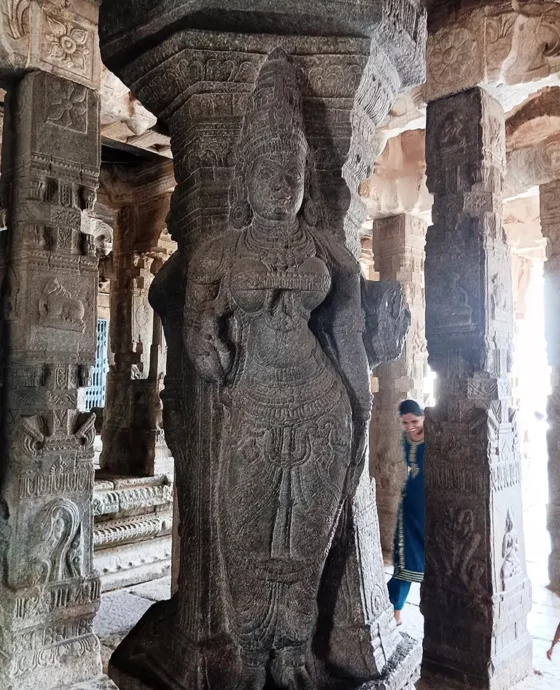
The Natya Mandapa, or Dance Hall, shines as one of its most remarkable features. In this article, we will take you on a virtual tour of the Natya Mandapa, revealing its stunning sculptures, mesmerizing paintings, and historical significance.
The Natya Mandapa is often referred to as the Ranga Mantapa due to its association with dance and performance. This part of the temple is renowned for its 70 intricately carved pillars, each a testament to the astounding talent of the Vijayanagara-era architects. The true star among these pillars is the famous “Akasha Stambha” or the Hanging Pillar.
These pillars are adorned with life-like sculptures of gods and goddesses, each involved in celestial activities. The craftsmanship and attention to detail in these sculptures are truly remarkable. You can witness Lord Shiva gracefully performing the Ananda Tandava, Brahma engrossed in playing the drum, Narada playing the tamburi/tambura, apsaras in elegant dance postures, and a myriad of divine artists playing various musical instruments, creating a symphony of divine melodies within the temple’s confines.




